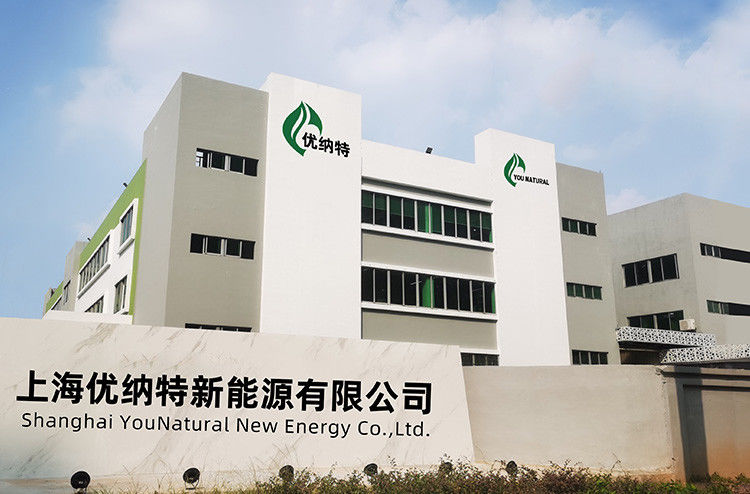Lithium ion battery (LIB) has been used as energy storage devices for portable electronics since 1990 years.
Lithium ion battery (LIB) has been used as energy storage devices for portable electronics since 1990 years. Recently, these are well noted as the power sources for the vehicles such as electric vehicles and hybrid electric vehicles. Both layered type LiCoO2, LiNiO2 and spinel type LiMn2O4 is the most important cathode materials because of their high operating voltage at 4 V (Mizushima, et.al, 1980, Guyomard, et.al, 1994). So far, LiCoO2 has been mostly used as cathode material of commercial LIB. However, LiCoO2 and LiNiO2 have a problem related to capacity fading due to the instability in rechargeable process. Cobalt is also expensive and its resource is not sufficient. Therefore, LiCoO2 cathode material is not suitable as a LIB for EV and HEV. On the other hand, LiMn2O4 is regarded as a promising cathode material for large type LIB due to their advantages such as low cost, non-toxicity and thermally stability (Pegeng, et.al, 2006). It was also known that Ni-substitute type LiMn2O4 (LiNi0.5Mn1.5O4) was exhibited rechargeable behavior at about 5 V (Markovsky, et.al, 2004, Idemoto, et.al, 2004, Park, et.al, 2004). LiNi0.5Mn1.5O4 has been considerably noticed as a cathode material with high power density which had an active potential at 5 V. The layered type LiCo1/3Ni1/3Mn1/3O2 was found to exhibit superior high potential cathode properties. This had rechargeable capacity with more than 150 mAh/g at higher rate and a milder thermal stability, but shows significantly capacity fading during the long rechargeable process. Recently, olivine type phosphate compound is noted as an alternative cathode material. LiFePO4 and LiMnPO4 were expected as next generation materials for large LIB because of low-cost, environmentally friendly, high thermally stability and electrochemical performance. On the other hand, the oxide type anode such as spinel type Li4Ti5O12 is expected as the candidate for the replacement of carbon anodes because of better safety. LIB which is consisted of LiFePO4 cathode and Li4Ti5O12 anode offers to high safety and long life cycle. Therefore, it is expected as the application of HEV or power supply for load levelling in wind power generation and solar power generation. So far, we have been developed spray pyrolysis technique as a aerosol process to prepare LiFePO4 and Li4Ti5O12 powders for LIB. In this chapter, the powder processing and electrochemical properties of LiFePO4 cathode and Li4Ti5O12 anode materials by spray pyrolysis were described.
Spray pyrolysis is a versatile process regarding the powder synthesis of inorganic and metal materials (Messing, et.al, 1993, Dubois, et.al, 1989, Pluym, et.al, 1993). An atomizer such as ultrasonic (Ishizawa, et.al, 1985) or two-fluid nozzle (Roy, et.al, 1977) is often used to generate the mist. The mist is droplet in which the inorganic salts or metal organic compound is dissolved in water or organic solvent. The droplets were dried and pyrolyzed to form oxide or metal powders at elevated temperature. The advantages of spray pyrolysis are that the control of particle size, particle size distribution and morphology are possible. Furthermore, the fine powders with homogeneous composition can be easily obtained because the component of starting solution is kept in the mist derived from an ultrasonic atomizer or two-fluid nozzle. Each metal ion was homogeneously blending in each mist. Each mist play a role as the chemical reactor at the microscale. The production time was very short (less than 1 min). In the other solution process such hydrothermal, precipitation, hydrolysis, the oxide powders were often prepared for few hours. In addition, the process such as the separation, the drying and the firing step must be done after the chemical reaction in the solution. The oxide powders are continuously obtained without these steps in the spray pyrolysis. So far, it has been reported that this process is effective in the multicomponent oxide powders such as BaTiO3 (Ogihara, et.al, 1999) and alloy powders such as Ag-Pd (Iida, et.al, 2001).
Recently, layered type of lithium transition metal oxides such as LiCoO2 (Ogihara, et.al 1993), LiNiO2 (Ogihara, et.al, 1998), LiNi0.5Mn1.5O4 (Park, et.al, 2004), LiNi1/3Mn1/3Co1/3O2 (Park, et.al, 2004) and spinel type of lithium transition metal oxides such as LiMn2O4 (Aikiyo, et.al, 2001), which are used as the cathode materials for Li ion batteries also have been synthesized by spray pyrolysis. It has been clear that these cathode materials derived from spray pyrolysis showed excellent rechargeable performances. This revealed that the particle characteristics such as uniform particle morphology, narrow size distribution and homogeneous chemical composition led to higher rechargeable capacity, higher efficiency, long life cycle and higher thermal stability.

